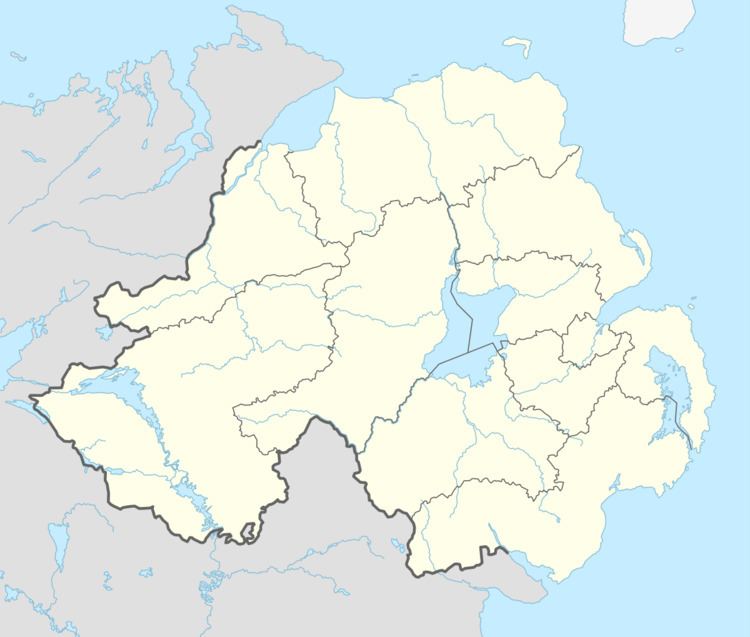Population 387 (2001 Census) Sovereign state United Kingdom Local time Monday 12:08 PM Province Ulster | Irish grid reference H755453 Post town CALEDON Dialling code 028 | |
 | ||
Weather 8°C, Wind SW at 8 km/h, 77% Humidity UK parliament constituency | ||
Caledon /ˈkælᵻdᵻn/, historically known as Kinnaird (Irish: Cionn Aird (head/top of the height or hill)) is a small village and townland (of 232 acres) in County Tyrone, Northern Ireland. It is in the Clogher Valley on the banks of the River Blackwater, 7 miles from Armagh. It lies in the southeast of Tyrone and near the borders of County Armagh and County Monaghan. It is situated in the historic barony of Dungannon Lower and the civil parish of Aghaloo.In the 2001 Census it had a population of 387 people. It is a designated conservation area.
Contents
- Map of Caledon UK
- Name
- History
- Transport
- People
- Education
- 19th century population
- 21st century population
- Caledon Townland
- References
Map of Caledon, UK
Name
The name Caledon appears to be a shortened version of Caledonia, the old Latin name for Scotland. Originating from the Pictish tribe of northern Scotland, the Caledonii, the term means "great, hard/tough people".
History
The old settlement of Kinard was burned in 1608 by the forces of Sir Cahir O'Doherty during O'Doherty's Rebellion. Sir Henry Óg O'Neill, the main local landowner, was killed by the rebels.
Caledon House was built in 1779 by James Alexander, a member of the Irish House of Commons for Londonderry, who had previously in 1778 bought the Caledon Estate. James Alexander was made Baron Caledon in 1790 and later Viscount Caledon in 1797. The House was begun in 1779 to designs by Thomas Cooley, but altered by John Nash in 1808-10.
On 20 June 1968, Austin Currie, Nationalist Party MP at Stormont, with others, began a protest about discrimination in housing allocation by 'squatting' (illegally occupying) in a house in Caledon. The house had been allocated by Dungannon Rural District Council to a 19-year-old unmarried Ulster Protestant woman, Emily Beattie, who was the secretary of a local Ulster Unionist Party politician. Beattie was given the house ahead of older married Catholic families with children. The protesters were evicted by officers of the Royal Ulster Constabulary, one of whom was Beattie's brother. The next day, the annual conference of the Nationalist Party unanimously approved of the protest action by Currie.
Transport
Caledon railway station (on the narrow gauge Clogher Valley Railway) opened on 2 May 1887, but finally closed on 1 January 1942. Tynan and Caledon railway station on the mainline Great Northern Railway (Ireland) opened on 25 May 1858 and finally closed on 1 October 1957.
People
Education
19th century population
The population of the village decreased during the 19th century:
21st century population
On Census day (29 April 2001) there were 387 people living in Caledon. Of these:
For more details see: NI Neighbourhood Information Service
Caledon Townland
The townland is situated in the historic barony of Dungannon Lower and the civil parish of Aghaloo and covers an area of 232 acres.
The population of the townland declined during the 19th century:
The village of Caledon is in the townland of the same name and in 1891 had an area of 45 acres.
The townland contains one Scheduled Historic Monument: a Beam engine (grid ref: H7581 4521).
